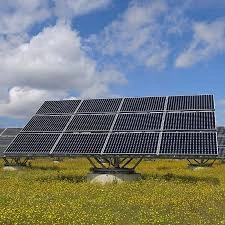Choosing the Right Solar Panel System for a 1.5-Ton Air Conditioner Efficiency and Performance
Solar Panel Solutions for a 1.5 Ton Air Conditioner
As the world increasingly shifts towards sustainable energy solutions, solar power has emerged as a viable alternative for powering various appliances, including air conditioning systems. A 1.5-ton air conditioner, commonly used in residential and commercial settings, requires a significant amount of energy to operate efficiently. Therefore, harnessing solar power to support such appliances can lead to considerable savings on electricity bills while reducing carbon footprints.
Understanding Energy Requirements
To begin with, it is essential to understand the energy requirements of a 1.5-ton air conditioner. Typically, an air conditioner rated at 1.5 tons consumes around 1,500 to 2,000 watts per hour, depending on its efficiency and usage pattern. This translates to approximately 12 to 16 kilowatt-hours (kWh) of energy consumption per day, assuming an average operating time of 8 to 10 hours. Thus, to fully power a 1.5-ton air conditioner using solar panels, one must calculate the total energy output required from the solar system.
Solar Panel System Sizing
The size of the solar panel system needed to support a 1.5-ton air conditioner can be determined by taking into account several factors, including the efficiency of the solar panels, local sunlight hours, and potential shading from trees or buildings. On average, a high-efficiency solar panel can produce about 300 watts under optimal conditions.
To estimate the number of panels required, consider a scenario where the air conditioner consumes approximately 15 kWh daily. If we assume an average of 5 sunlight hours per day, the total energy produced by one 300-watt panel in a day is 1.5 kWh. Thus, to supply 15 kWh, one would need around 10 solar panels of 300 watts each. This setup ensures that the air conditioner operates smoothly, even on days with less sunlight.
solar panel for 1.5 ton ac

Cost-Effectiveness and Savings
Investing in a solar panel system can lead to significant long-term savings on electricity bills. While the initial cost of purchasing and installing solar panels can be substantial, various government incentives, tax credits, and financing options can alleviate the financial burden. As energy prices rise, reliance on solar power becomes increasingly economically attractive, allowing homeowners to lock in energy costs and gain financial independence from utility companies.
Moreover, many regions offer net metering programs, allowing homeowners who produce more solar energy than they consume to sell the excess back to the grid, further enhancing savings.
Environmental Impact
Using solar power to run a 1.5-ton air conditioner also has noticeable environmental benefits. Air conditioning systems are significant contributors to greenhouse gas emissions due to their high energy consumption. By transitioning to solar energy, households can reduce their reliance on fossil fuels, thus contributing to a decrease in overall emissions.
Conclusion
In conclusion, powering a 1.5-ton air conditioner with solar panels is not only possible but also beneficial from both an economic and environmental standpoint. As technology advances and solar panels become more efficient and affordable, homeowners are presented with an excellent opportunity to embrace sustainable living. By generating clean energy, they can enjoy the comforts of air conditioning while contributing to a greener planet. As the demand for energy-efficient solutions grows, so too will the practicality and accessibility of solar energy for everyday uses.
-
String Solar Inverter: The High-Efficiency Solution for Smart Solar EnergyNewsJul.14,2025
-
Revolutionizing Rooftop Energy with the Power of the Micro Solar InverterNewsJul.14,2025
-
Power Independence with Smart Off Grid Solar Inverter SolutionsNewsJul.14,2025
-
On Grid Solar Inverter: Powering the Future with Smart Grid IntegrationNewsJul.14,2025
-
Monocrystalline Solar Panels: High-Efficiency Power for the Future of Clean EnergyNewsJul.14,2025
-
Bifacial Solar Panel: A Smarter Investment for Next-Generation Energy SystemsNewsJul.14,2025







